History
After Samuel Sarphati had visited The Great Exhibition, he decided to found the Vereeniging voor Volksvlijt (Association for Popular Diligence) with the goal of erecting a building similar to the Crystal Palace in London. In 1853, he petitioned the municipality. His new Palace was to be part of an extensive plan of expansion of the city, which also included construction on the banks of the Amstel and in what is now De Pijp. In 1855, municipal authorities agreed to Sarphati's plan.
A prize was offered for building designs in 1856, but not awarded to any contestant. The Association then contacted Outshoorn. On September 7, 1859, construction was officially started in the presence of king William III. The building was opened on August 16, 1864. Starting 1865, it hosted weekly concerts by its own Palace Orchestra, directed by Johannes Meinardus Coenen until 1891, then by Richard Hol. The famous French constructor of organs, Aristide Cavaillé-Coll, put in place a large concert organ in 1875. This organ was first played by Alexandre Guilmant on October 26, 1875. It was later played by Charles-Marie Widor (1886), Louis Vierne (1895) and Camille Saint-Saëns (1897). The Palace's regular organist, from 1879, was the Belgian Jean-Baptiste de Pauw.
It soon turned out that exploitation of the building as an exhibition hall was infeasible. The Palace, instead, turned into an entertainment center, and part of its garden was sold off. The ground was to house a luxury shopping gallery designed by Adolf Leonard van Gendt in 1881–1883.
Under the directorate of Johannes George de Groot, his operatic troupe performed in the Palace, until it went bankrupt in 1895. The Palace orchestra and organ player were laid off in the same year and the Palace gradually lost its position as a cultural center. The placing of an organ in the Concertgebouw drew the crowd away from the Cavaillé-Coll organ, which was sold to the Haarlem municipality (sponsored by the business men Adriaan Stoop and Julius Carl Bunge). In 1922 it was moved to the Philharmonie Haarlem, where it still resides.

The Rijksmuseum is the national museum of the Netherlands dedicated to Dutch arts and history and is located in Amsterdam. The museum is located at the Museum Square in the borough of Amsterdam South, close to the Van Gogh Museum, the Stedelijk Museum Amsterdam, and the Concertgebouw.

Aristide Cavaillé-Coll was a French organ builder. He has the reputation of being the most distinguished organ builder of the 19th century. He pioneered innovations in the art and science of organ building that permeated the profession and influenced the course of organ building, composing and improvising through the early 20th century.
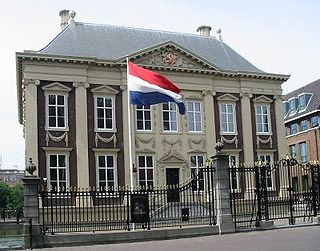
Jacob van Campen was a Dutch artist and architect of the Golden Age.

Villa Welgelegen is a historical building in Haarlem, the Netherlands, which currently houses the offices of the provincial executives of North Holland. Located at the north end of a public park in the city, it is an example of neoclassical architecture, designed by Abraham van der Hart and unusual for its style in the Netherlands.

Amsterdam Impressionism was an art movement in late 19th-century Holland. It is associated especially with George Hendrik Breitner and is also known as the School of Allebé.

Samuel Sarphati was a Dutch physician and Amsterdam city planner.

The Dutch city of Amsterdam has had many planned expansions over the past two centuries.

RAI Amsterdam Convention Centre, formerly Amsterdam RAI Exhibition and Convention Centre or simply RAI Amsterdam, is a complex of conference and exhibition halls in the Zuidas business district of Amsterdam, Netherlands.

The Tweede Schilderijenzaal, or Painting Gallery II, is one of two art gallery rooms in Teylers Museum. The Tweede Schilderijenzaal was built in 1893 as an extension of the first gallery.
The following is a timeline of the history of the municipality of Amsterdam, Netherlands.

Richard Constant Boer was a Dutch linguist who specialized in Old Norse.
Johannes Frederik Hulk Sr. was a Dutch painter, draftsman, photographer, and owner of a paint supplies store.
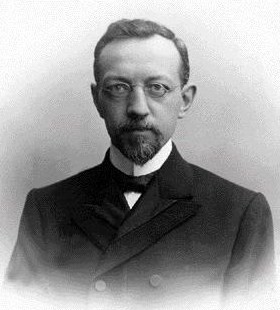
Johannes Cornelis Hendrik de Meijere was a Dutch zoologist and entomologist who specialised in Diptera and Coleoptera.

The Moses and Aaron Church in the Waterlooplein neighborhood of Amsterdam, the Netherlands, is officially the Roman Catholic Church of St. Anthony of Padua. Originally a clandestine church, it was operated by Franciscan priests at a house on Jodenbreestraat, where the wall tablets of Moses and Aaron hung on the wall. In 1970, the present church was designated as a Cultural Heritage Monument of the Netherlands.
Jan Gaykema Jacobsz. was a Dutch painter, draughtsman and botanical illustrator.
Emile [Emmanuel Gerhardus Johannes] Wennekes born July 19, 1963, Doetinchem, is a Dutch musicologist, Full Professor at Utrecht University for the Chair: Music and Media.
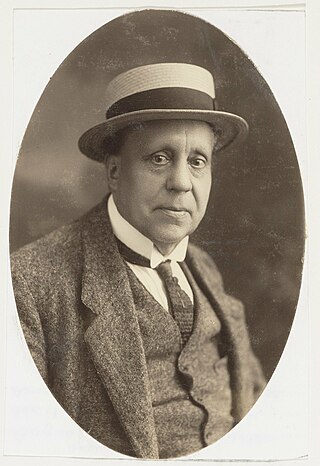
August Theodoor Cornelis Kiehl, also known as Guus Kiehl, was a Dutch actor, director and playwright. He is best known for his successful career as an actor in operetta theatre, his original operetta De Parel van Zaandam and his performances in several Dutch films in the 1930s.
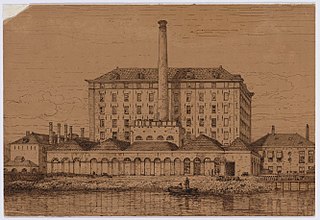
The Nederlandsche Suikerraffinaderij NV (NSR) was an Amsterdam sugar refining company that refined sugar cane to produce white sugar and other sugar products. After its closure, its main sugar refinery became part of the Amstel Suikerraffinaderij and later was part of the Wester Suikerraffinaderij.
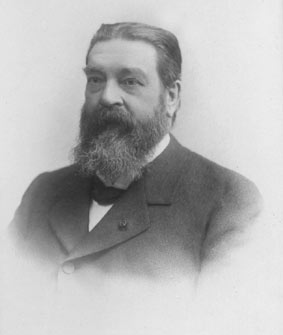
Maurits Cornelis van Hall (1836–1900) was a Dutch lawyer, banker and politician. He was involved in founding many companies.
This page is based on this
Wikipedia article Text is available under the
CC BY-SA 4.0 license; additional terms may apply.
Images, videos and audio are available under their respective licenses.

















